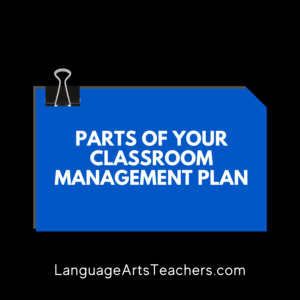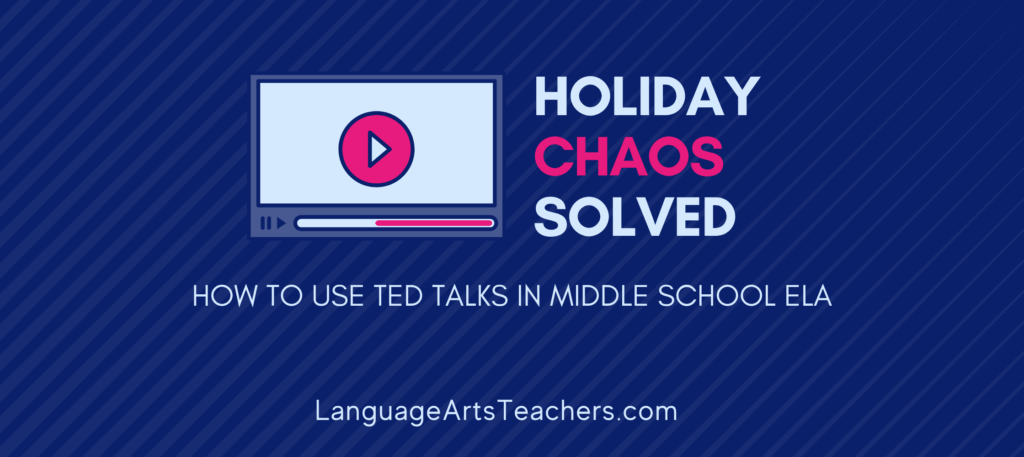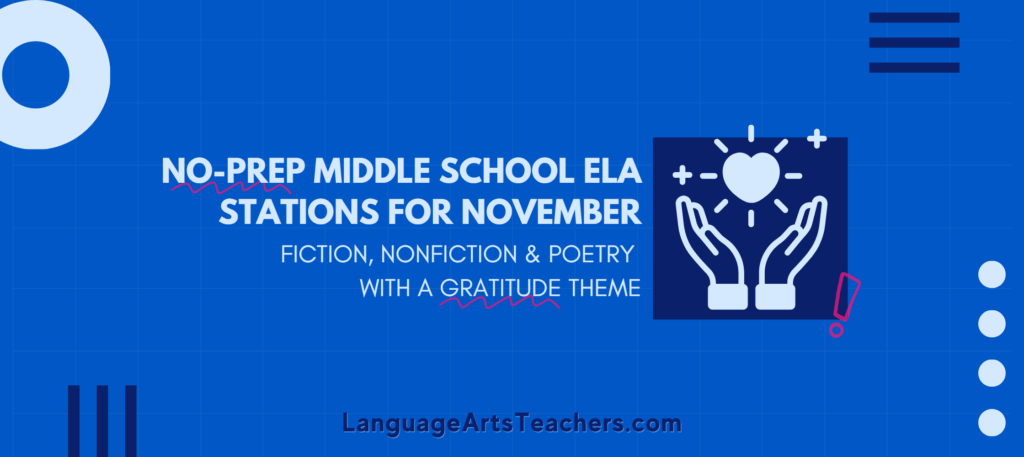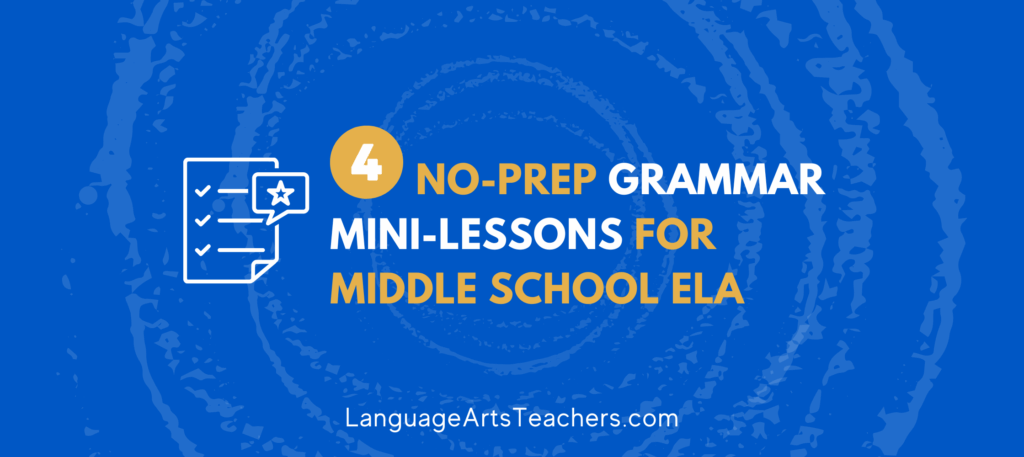Really? A “classroom management plan” for a Middle School ELA Teacher?”
Yes, absolutely! Thinking ahead, being proactive, and knowing what you’ll do or say in certain classroom situations is how you’ll stay in control, remain calm, and feel confident during all those pop-up classroom management issues that your school doesn’t directly address.
The concept of having a classroom management plan of your very own is exactly what I sat down to talk about (and later write about below) with guest expert Linda Kardamis of https://www.teach4theheart.com. If you missed our conversation during the MSELA Summit (the virtual conference for Middle School ELA Teachers), then click here to check out all the topics, SEL included).
Linda and I dove into the benefits (huuuuuge time-saver!) of creating, planning, and writing out a classroom management plan of your own. There are so many situations and issues that arise in the classroom that you have to deal with that your school code of conduct doesn’t address. So that’s what Linda and I talked about!
Here’s what we learned from the MSELA Summit conversation with Teach 4 the Heart’s Linda Kardamis:
When it comes to creating your classroom management plan, there are a few key elements that you’ll need to consider.
First, you’ll need to have a clear understanding of your goals and objectives for the classroom. Next, you’ll need to develop rules and procedures that will help to maintain order and discipline in the classroom. Finally, you’ll need to create a system for monitoring and evaluating student behavior.
By taking the time to carefully consider each of these elements, you’ll be well on your way to creating a successful classroom management plan.
The value of writing out your classroom management plan
When starting out in the classroom, it is important to have a plan for managing your students. This plan will help you to keep track of your students’ progress, identify areas where they need improvement, and set goals for the future.
It is also valuable to have a written plan for classroom management, as it provides a clear framework for you to follow. This plan should include your goals for the classroom, your expectations for student behavior, and your procedures for dealing with misbehavior.
By having a written plan, you will be able to stay organized and focused on your goals, and you will be able to provide a consistent learning environment for your students.
Know ahead of time what you’ll do with your students
Helps you be way more consistent
When it comes to handling any situation with kids or just wanting students to know what to expect on a daily basis, consistency is key. The more ways that you can stay consistent, the more students will know what is allowed and, more importantly, what is not allowed.
On the flip side, if you have some days where you allow a certain behavior and then another day where you don’t, students will become confused and also consider your rulings unfair.
Boundaries are clear
When the boundaries are clear, it is easier for students to know what is expected of them. When this happens, there is no confusion, and students can determine whether they will follow along or step out of line. But rather than not being sure, they know what they are doing, and from here, you can take the appropriate response.
Makes you more confident
This will allow you to lead with confidence and treat every student as a responsible individual that knows what is expected of them. You can feel confident with any rulings that you may need to make as the boundaries and rules were clearly explained before.
Mutual respect
All of this to say, you don’t have to be mean as a teacher. Yes, there are times when you need to be tough, but most situations should be used as a learning opportunity, and your students should be taught how to follow along with the culture of your classroom. This comes through mutual respect and your students knowing that you care about them.
Parts of your plan classroom management plan:

Clear expectations of your students
One of the most important things you can do as a teacher is to set clear expectations for your students. When your students know what is expected of them, they are more likely to be successful in meeting your expectations. There are a few key things to keep in mind when setting expectations for your students.
First, make sure that your expectations are realistic and achievable. If you set too high of standards, your students may become discouraged and give up.
Second, be clear and concise in communicating your expectations to your students. They should understand exactly what is expected of them in order to meet your expectations.
Finally, be consistent in holding your students accountable for meeting your expectations. If you let them slide occasionally, they may come to expect that it is okay not to meet your standards all of the time.
By being mindful of these things, you can set clear expectations for your students that will help them be successful in meeting your standards.
Procedures
As any teacher knows, having a set of procedures in place is essential for maintaining a well-run classroom. By clearly outlining the expectations and rules from the start, teachers can help to prevent behavioral problems and keep the learning environment focused and organized. Procedures can cover everything from how students line up for dismissal to how they raise their hand to ask a question.
In some cases, procedures may need to be adapted to meet the needs of individual students. For example, a student with ADHD may need a different set of rules for remaining on task than other students in the class.
However, by taking the time to establish procedures and review them regularly, teachers can create a positive and productive learning environment for all students.
Positive reinforcement
When it comes to helping students learn good behavior, Positive reinforcement is key. Positive reinforcement is a process where a student is rewarded for displaying positive behavior. This could be something as simple as verbal praise or a smile.
It’s important to make sure that the reinforcement is immediate so the student knows that their behavior is being noticed and appreciated.
Consistency is also important so that students know that they can expect to be rewarded for good behavior every time they display it.
Finally, it’s important to make sure that the reinforcement is meaningful to the student. A small sticker might mean a lot to one child, while another child might prefer a high-five or a hug.
By taking the time to find out what each student responds to, you can make Positive reinforcement a powerful tool for promoting good behavior in your classroom.
Logical consequences
There will be times when your student doesn’t behave as you would like them to in the classroom. When that happens, you can use logical consequences to help them understand why their behavior is not acceptable and what they can do to change it.
Logical consequences are based on the principle that actions have consequences, and they should be related to the behavior in question.
For example, if a student won’t stay seated during class, a logical consequence might be that they have to stand at the back of the room for the rest of the day. Logical consequences should be reasonable, fair, and consistent.
They should also be respectful of both you and your student’s dignity. If used effectively, logical consequences can help your student learn how to behave in a way that is respectful and considerate of others in the classroom community.
Responses to misbehavior
When students misbehave, it helps to have an idea of what you want to do for each issue that comes up. For example, if a student is talking out loud, walking around the classroom, cursing at another student, etc., you can have a response already written down. This will help you know what to do in each situation.
And obviously, this doesn’t mean it is all written in stone, but it will give you a good starting point for most situations that arise in your classroom.
Smooth-Running Classroom Process
Adjust – When it comes to your plan, it is okay to adjust, pivot, and make changes to it. As you go forward, figure out what is working and what may need to be tweaked. Just as you are growing and improving as a teacher, you also can grow and improve with your classroom management.
Plan – Write out your plan and take the time to figure out what you want to do. You may have questions about certain situations, but you can always research and ask for help from other teachers in specific areas. But regardless, you will already have started to plan for specific situations.
Practice – The best way to improve your plan is to practice it. You won’t always be perfect, and neither will your students, but practice what you want in your plan. Before you know it, your classroom will flow smoothly, and both you and your students will better enjoy the experience.
Classroom Management Conclusion
In conclusion, it is important to have a well-thought-out classroom management plan as a teacher. This plan will help you maintain a safe and positive learning environment for your students.
It is also important to be flexible and willing to adjust your plan as needed. And finally, practice makes perfect! The more you use your plan, the better you will become at implementing it.





